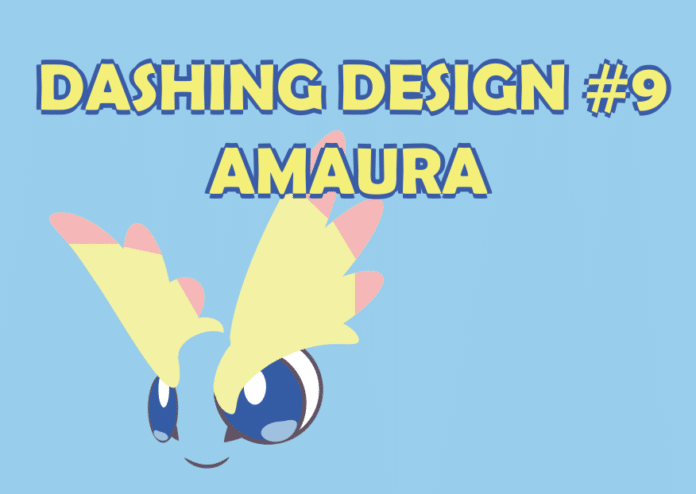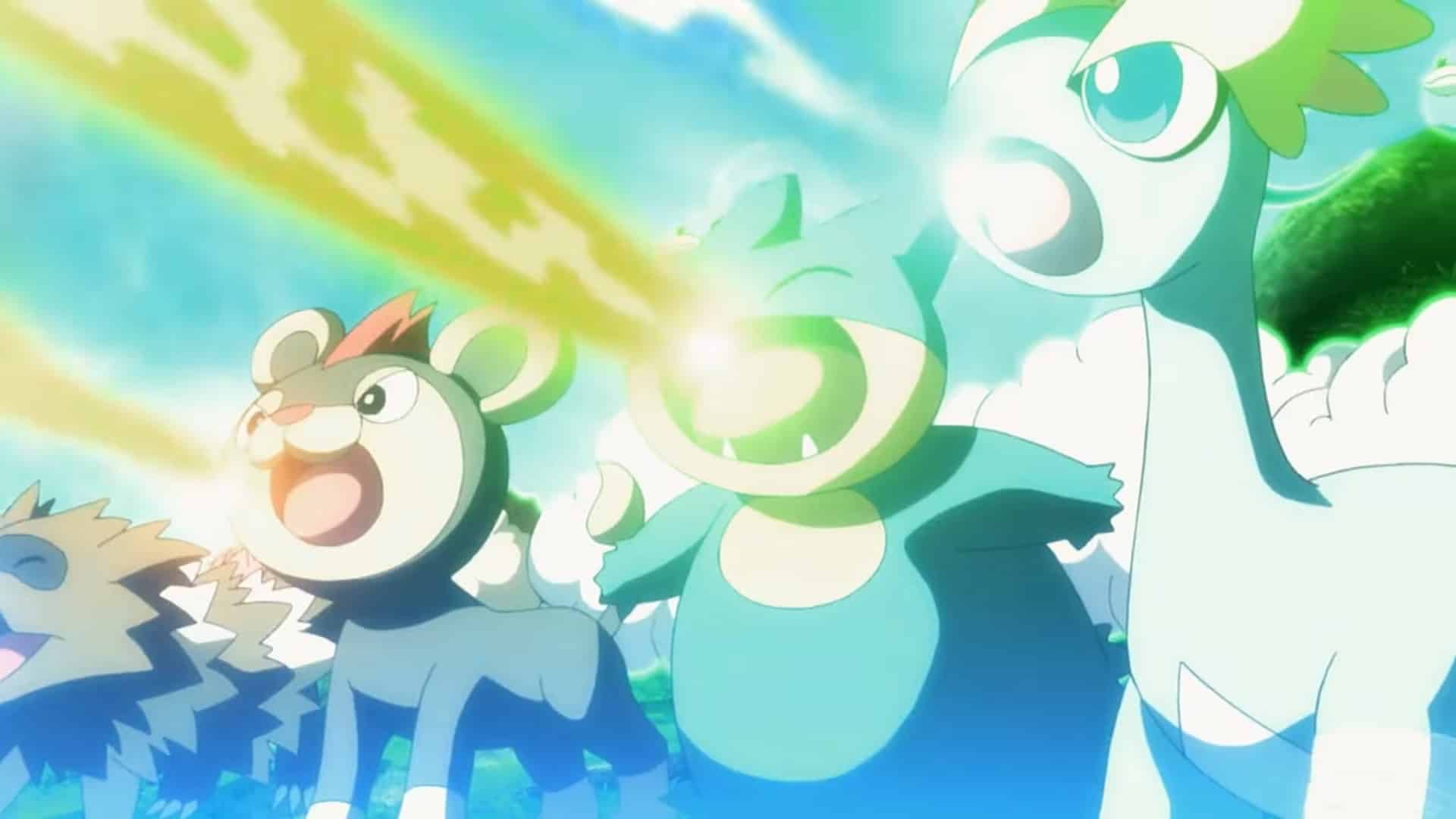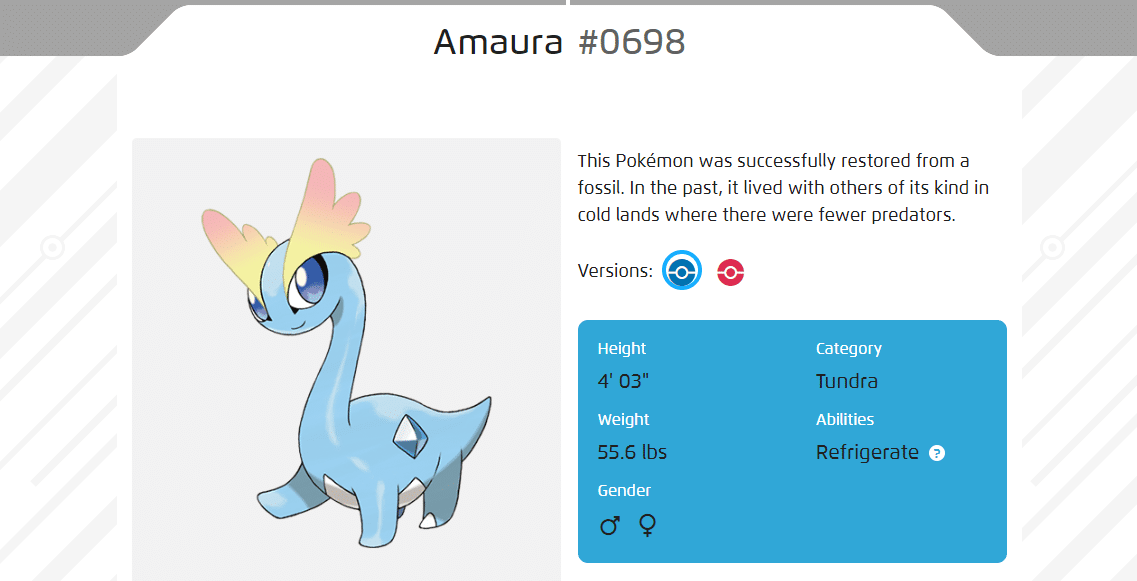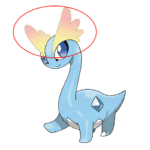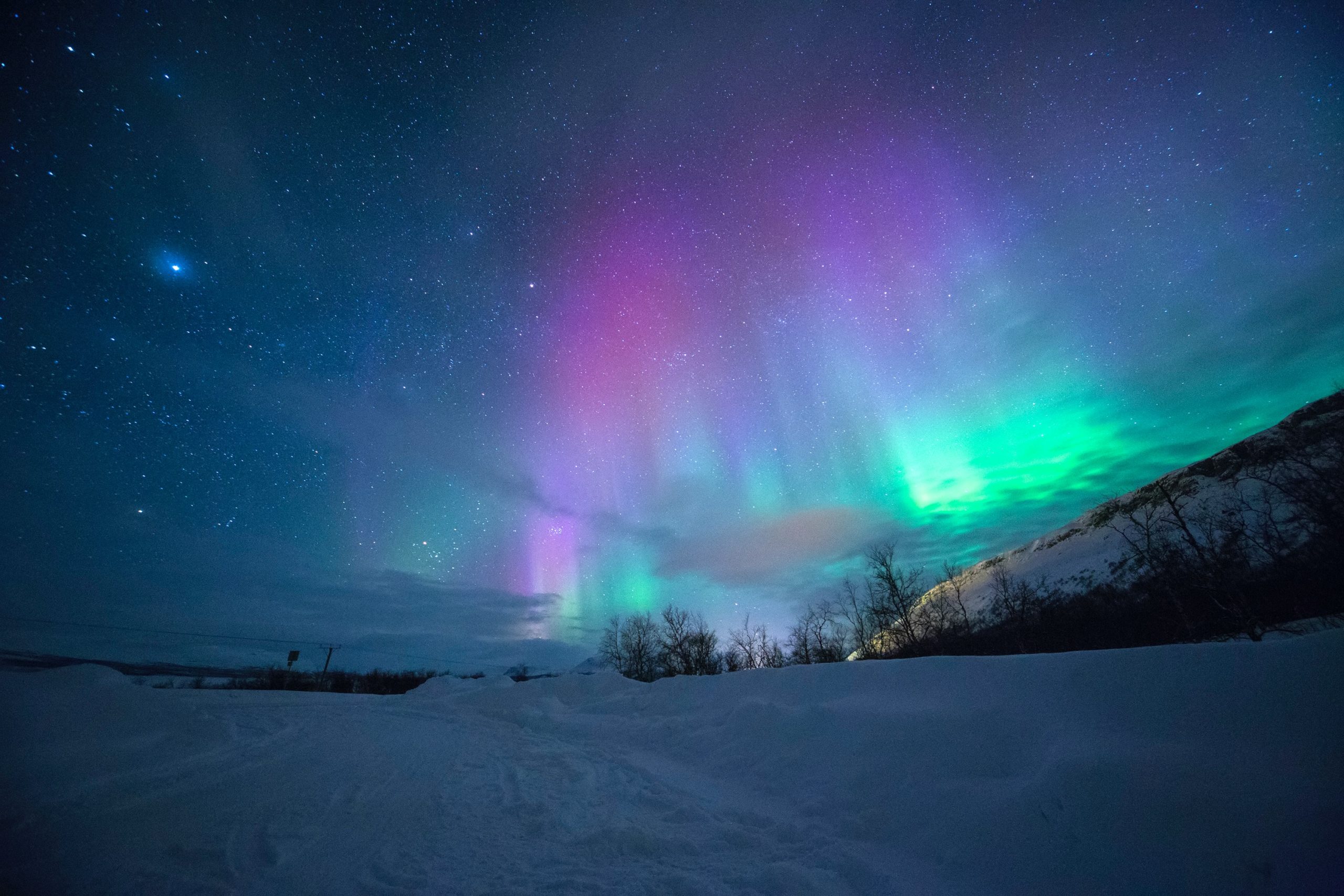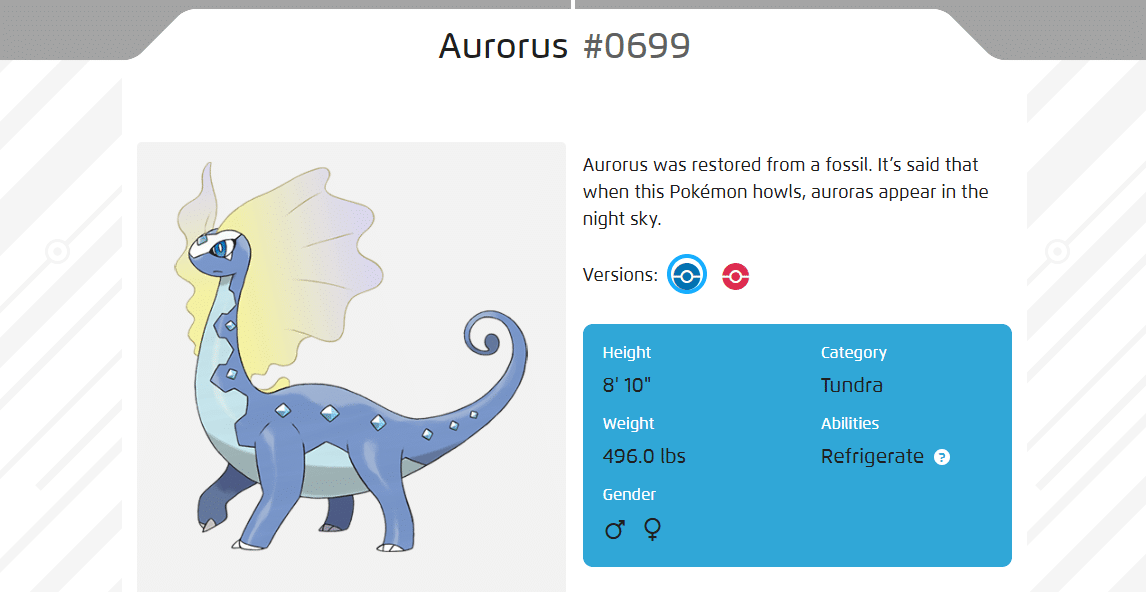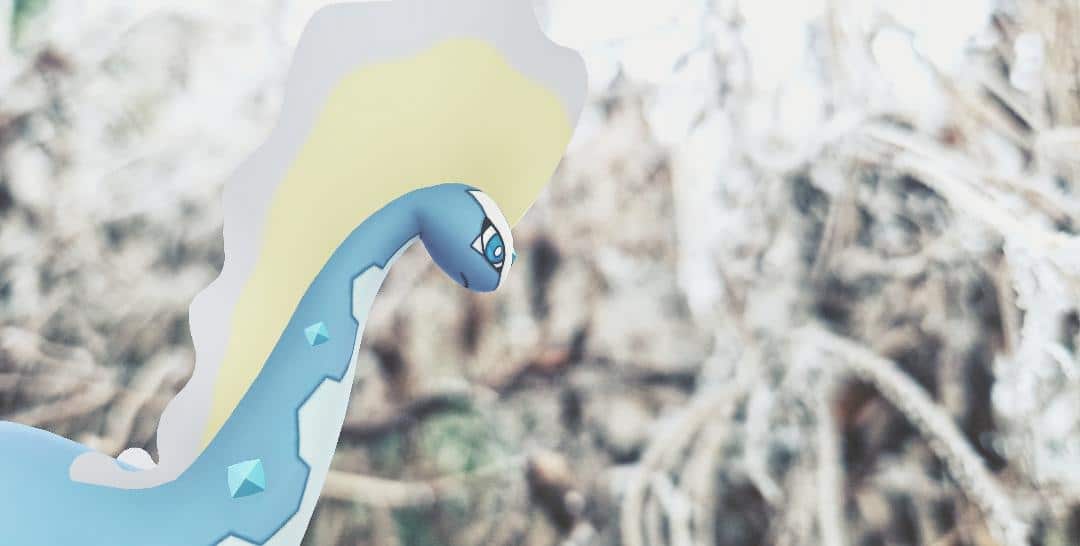Good day, Pokémon Trainers! Have you ever noticed how certain events in Pokémon GO give special attention to a single Pokémon or the community itself tends to hype a new Pokémon up? Have you ever wondered why this Pokémon specifically and what its origins are?
Well, that’s where the Dashing Design series comes in! I’ll be your guide as we take a look at the franchise history, concept, and potential design inspirations of specific Pokémon. We’re reaching the end of the year and the second half of the winter event as well, so I think it’s finally time we talk about a Pokémon you might have already seen this winter season if you were lucky and our first fossil Pokémon here in Dashing Design, Amaura!
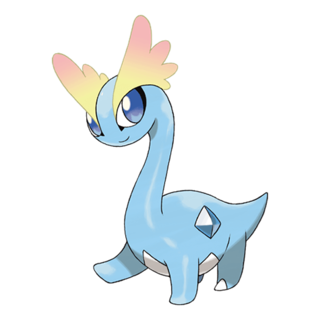 Amaura
Amaura
Amaura (Right). Source: Movie Trailer
I was going to say Amaura is a relatively recent Pokémon as it appeared in Pokémon X and Y. But as it turns out those games came out in 2013 making them 10 years old now. So, ahem, with that reality check out of the way, this makes Amaura a Sixth Generation Pokémon. The Sixth Generation encompassed the Pokémon X, Pokémon Y, Pokémon Omega Ruby, and Pokémon Alpha Sapphire lineup of mainline videogames.
It’s worth noting that Amaura is a Fossil Pokémon. That means in Pokémon lore, Amaura is already extinct and can only be revived through science. And what I find interesting is that the Amaura line along with the Tyrunt line would bear the title of the “Newest Fossil Pokémon” for a while. This is because the Seventh Generation of games did not have new fossil Pokémon. Making the Seventh Generation, the second after the …Second Generation to not feature new fossil Pokémon.
As for notable non-game appearances. Amaura and its evolution first debuted in the anime in Pokémon the Series: XY Ep. 23. And an Amaura was prominently featured in Pokémon the Movie: Volcanion and the Mechanical Marvel.
Etymology
Amaura’s name is decidedly simple and directly refers to its main inspirations. Amaura is a combination of Amargasaurus (A type of dinosaur) and Aurora (a type of “natural light” that can sometimes be seen in the night sky in specific regions). We’ll look into these in further detail when we look at Amaura’s design. But as far as Amaura’s Japanese name is concerned it’s “Amarus”, which again, probably takes from Amargasaurus. So not a lot extra going on with the Japanese name so far. But perhaps we can squeeze a bit more out of it when we look at Amaura’s evolution Aurorus.
Design
Source: Official Site
So just by looking at it, we can already tell that Amaura is a small baby four-legged dinosaur. More accurately it’s the type of dinosaur commonly referred to as a “Sauropod”. If you were the type of kid to be interested in dinosaurs growing up, you might already know what type of dinosaurs this classification refers to. Sauropods are typically herbivorous, very large in size, and typically have long necks. These types of dinosaurs are perhaps the most popular in modern fiction next to the T-Rex. The Brachiosaurs, the first dinosaurs to be seen in “Jurassic Park”, and Littlefoot from “The Land Before Time” both fall under this category.
However, with Amaura, we can be a bit more specific. Amaura is based on a specific type of Sauropod called the Amargasaurus. How do I know this? Well other than having a similar name, there is another factor. Remember when I linked to its designer’s X account while talking about Sneasler? Well, the same designer is responsible for the creation of Amaura and Aurorus as well. And he mentioned directly in a tweet that Amaura is based on the Amargasaurus to differentiate it from other Sauropod-inspired mons such as Meganium, Lapras, and Deino.
The typing
So that’s Amaura’s overall structure out of the way. But what’s up with that RockIce typing? Well, the Rock part of it is easy enough to explain. Every fossil Pokémon up to Generation Seven have been at least part Rock. And the Generation Eight fossil Pokémon are meant to be the result of scientific malpractice, so they are a bit of an outlier. So why have most fossil Pokémon been rock types? This has to do with what fossils are, to begin with.
Now just for the sake of clarity, I am not an expert or an active participant in the field of Palaeontology. So what I’m about to explain is a simplified version based on my own understanding. Now, when people think of fossils, they tend to think of skeletons and bones, after all that’s what we see with dinosaurs. But that’s not exactly completely accurate. “Fossil” is actually a pretty broad term that denotes remains or traces of living creatures from the past.
Things can fossilize in many ways and there are specific conditions that have to be met for something to survive as a fossil for a long period of time. For dinosaurs in particular, what we tend to think of as bones, aren’t exactly bones as we know them. Instead, dinosaur remains that were buried under sedimentary rocks have “casts” created of them with minerals over time. These remain preserved even after their body have decayed. These casts manage to capture a lot of the dinosaur’s original skeletal structure which helps us to know what they were like when they were living.
So that’s very likely where the Rock typing comes from. Perhaps the minerals from the fossils used to revive these Pokémon become a part of their new biology thus they have Rock type abilities. But what about the Ice typing?
The Sails
In the Pokédex entry stated at the start of the design analysis, it says Amaura used to live in cold regions. So that’s probably where the Ice typing comes from right? It’s a dinosaur living in colder regions. Weeeeell, not quite. While there are reasons to believe some dinosaurs lived in colder regions. There isn’t much in the way to believe that Sauropods did. And the only fossil of an Amargasaurus was found in Argentina, which is a country that can be pretty cold in the Southern regions. But still, probably not the first place you’d think for a cold area.
Amaura Source: Official Site. Amargasaurus Source: Public Domain Image from Wikipedia
Rather, Amaura’s Ice typing more likely stems from the weird, colorful eyelash things on its head. It’s a bit more obvious with Aurorus, Amaura’s evolution, but those are meant to be “sails” that some dinosaurs possessed. The Amargasaurus is currently believed to have such sails as well. Which also explains the upward protruding spikes on its skeleton. And the sails definitely seem to be an important part of Amaura’s design.
So, what’s up with them? Why are they a different color from the rest of Amaura’s body? In animation, they seem to move in a wavy pattern and also change colors, which hints at their true origins. The Southern and Northern Lights. Otherwise known as Aurora Australis and Aurora Borealis! Insert Mandatory Steamed Hams Joke here.
Source: Photo by Lightscape on Unsplash
So what exactly are these light shows that appear in the sky? Well, Auroras are actually a natural phenomenon that stems from disturbances in a layer of the Earth known as the Magnetosphere due to Solar Winds. With Solar Winds being charged particles that are released from the Sun’s atmosphere. Auroras can most often be seen in the frigid and snow-covered North and South Poles, which is very likely the reason for Amaura’s Ice typing.
Is that all?
Well, actually, Auroras might be only one reason for Amaura’s Ice typing. There’s a bit more to Amaura’s design, such as the diamond on the side of its body. So to analyze this line further, let’s jump over to Amaura’s evolution, Aurorus:
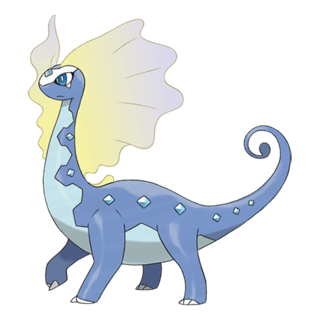 Aurorus
Aurorus
Source: Official Site
Etymologically Aurorus’s name is the same as Amaura. Being a combination of Aurora and Amargasaurus. Its Japanese name Amaruruga also seems to have the same origins. Aruru could be seen as a cute way to say Aurora. But I think it’s time we looked at this line’s Japanese name a bit closer.
You see, Amaruruga starts with “Ama”, and “Amaru” sounds very close to “Amara”. Ama, in Japanese, means Sky or Heaven. Very fitting considering the Aurora inspirations. Auroras appear in the sky and are the results of events among Celestial bodies in Space after all. In fact, the term “Aurora” comes from a Greek Goddess.
On the other hand, “Ra” in Japanese means to Smile or to Laugh. Taken together Amara can mean Good, Excellent, and Respectable. Amara is a common name for people, both male and female, but arguably a bit more common for females. Sima, who is Kiawe’s mom in the Pokémon Sun and Moon anime, is also named Amara in Japanese.
All this is to say that Aurorus is meant to have feminine qualities. But this ain’t any old lady, she’s a straight-up queen!
Dino Royalty?
Source: AR Photograph by kittypokemonsalot
Taking Aurorus’s title as a queen into account, a lot of its design elements now make a lot more sense. The Tyrantrum line, the other Gen Six fossil Pokémon line takes elements of a king. So as its counterpart, it makes sense that Aurorus and Amaura would take from a queen.
For example, take the diamond-like gems on the two sides of its body. Also take the body as a whole, which starts as blue but becomes white as we reach the tummy. The intersecting point has a specific “snowflake” pattern to it. This gives the impression that Aurorus is wearing an expensive gown or dress with jewelry embroidered in it. Much like one a member of royalty might wear.
Also, consider the gem on its forehead that is surrounded by a white pattern. And that pattern then naturally connects to Aurorus’s sails. The gem surrounded by the white pattern gives the impression of a tiara or a crown which are commonly associated with royalty. Whereas taken in this context, the sails give the impression of a headdress such as the Hennin that members of the nobility would wear in the medieval period, and nowadays are commonly associated with princesses. In fact, these connections with royalty go even further. Consider the Pokémon Y Pokédex entry:
Using its diamond-shaped crystals, it can instantly create a wall of ice to block an opponent’s attack.
And this isn’t an outlier as most of Generation Six’s dex entries mention that Aurorus’s power stems from its crystals. Much like how a gem-infused crown and pricey jewelry represent a ruler’s power!
Association With The Night
On another note, Amaura can only evolve to Aurorus by leveling up at or past Level 39 at night in the base games. This can be a reference to the fact that Auroras can only be seen at night. But it can also be a reference to the fact that Aurorus is the feminine counterpart to Tyrantrum. The moon and the night are often closely affiliated with femininity. “The Night” translated to Spanish is “La Noche” and in French, “La Nuit”, both of which have a feminine connotation. And the French one is particularly interesting as it helps to ease us into our next topic of discussion:
Why Kalos?
So as stated before Aurorus debuted in Pokémon X and Y. These games take place in the region of Kalos, which is heavily inspired by France. But what is its fossil doing in Kalos? As mentioned prior, the only Amargasaurus skeleton was found in Argentina and is currently being held at a Museum in Australia. You can’t often see Auroras in France either. Though, according to the Natural History Museum’s website, at least one Sauropod species’ fossils were found in France.
Another reason that might be responsible for this design, might be the caves of Gargas. A cave system in France that has important remnants of ancient human civilization. The German name for Aurorus, ” Amagarga” seems to allude to this at least.
But really, I think it comes back to the “Queen” inspirations. The standard European King and Queen are pretty much the most recognized versions of rulers in pop culture. Also, Kalos is the second mainline game region to not be based on a Japanese location, coming right after Unova. And it is also the first European-inspired region. So it seems many Pokémon in Kalos took inspiration from things all across Europe and not just specifically France.
This can most clearly be seen with the main legendary trio Xerneas, Yveltal, and Zygarde, which have Nordic inspirations. With that in mind, I would like to introduce (or reintroduce if you already knew) you to Hans Christian Andersen. Hans Christian Andersen was born and raised in Denmark, a Nordic country. He was a children’s fiction writer responsible for writing many classics such as “The Little Mermaid”, “The Emperor’s New Clothes”, and, more relevant to our discussion, “The Snow Queen”.
Source: Public Domain Images Collected from Wikipedia
As the name might imply the titular “Snow Queen” is the queen of snowflakes in the story. So she would fit quite nicely as a potential inspiration for our Ice themed dino queen. As an added note, the immensely successful Disney movie “Frozen” is also inspired by The Snow Queen. It also came out in 2013, the same year as Pokémon X and Y came out. So I suppose creators working in the entertainment industry just had The Snow Queen in mind in 2013.
Aurorus’s Nature
It’s worth noting that the Snow Queen is the antagonist of her story. And Aurorus’s counterpart, Tyrantrum is meant to be a “Despot” or in other words, a tyrant king. Does this mean our ice dino is a rather cruel ruler as well? Well, not quite. In the Ultra Moon Pokédex it’s stated:
This usually quiet and kindly Pokémon has a surface temperature of around –240 degrees Fahrenheit.
And in the Shield Pokédex:
When gripped by rage, Aurorus will emanate freezing air, covering everything around it in ice.
So it seems Aurorus is kind, but also strong when required. This is quite accurate to the type of dinosaur Aurorus is. While Tyrantrum is a T-Rex, a dinosaur generally thought of as a fierce predator, Aurorus is a Sauropod. And Sauropods are generally thought of and portrayed as more docile herbivores. Yet one without many predators, as when threatened they can overpower their threats using their huge size alone.
And perhaps, in a sense, compared to Tyrantrum, Aurorus is also meant to represent a good ruler. One who is otherwise kind, but is not afraid to fight against injustice.
And there we go! As stated before, this will be the last Dashing Design for this year. Which, I find quite fitting, as this is the last single-digit Dashing Design, #9! So I hope you have been enjoying this little GOHub series of mine. Have a happy new year and hopefully, we can continue to look at many more Pokémon in the future. As for Amaura, while this is an entirely personal statement, I believe another reason for its Ice typing is because, by the end of the day, dinosaurs, are pretty cool 😎 . And this is why, Amaura’s design, is quite dashing!
Goodbye for now, Pokémon trainers. Priom-out!

